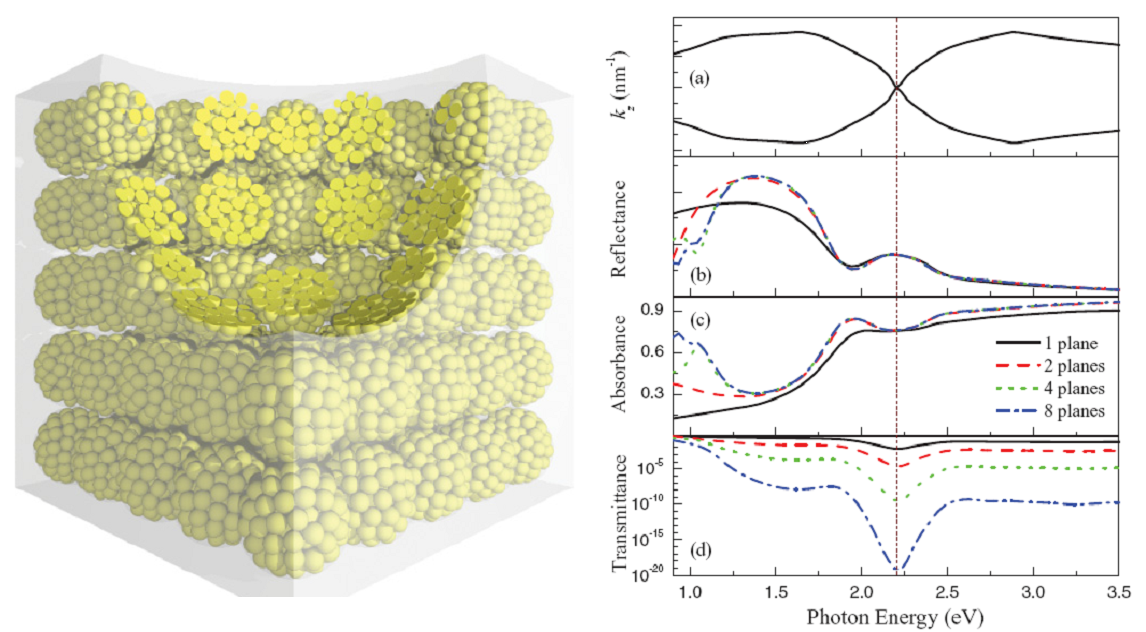Light scattering by a metallic nanoparticle coated with a nematic liquid crystal
V. Yannopapas, N. Fyttas, V. Kyrimi, E. Kallos, A.G. Vanakaras, D.J. Photinos, PSSA, DOI: 10.1002/pssa.201228489.
We study the optical properties of gold nanoparticles (NPs) coated with a nematic liquid crystal (NLC) whose director field is distributed around the NP according to the anchoring conditions at the surface of the NP. The distribution of the NLC is obtained by minimization of the corresponding Frank free-energy functional whilst the optical response is calculated by the discrete-dipole approximation (DDA). We find, in particular, that the anisotropy of the NLC coating does not affect much the (isotropic) optical response of the NP. However, for strong anchoring of the NLC molecules on the surface of NP, the inhomogeneity of the coating which is manifested by a ring-type singularity (disclination or Saturn ring), produces an enhancement of the extinction cross spectrum over the entire visible spectrum.
